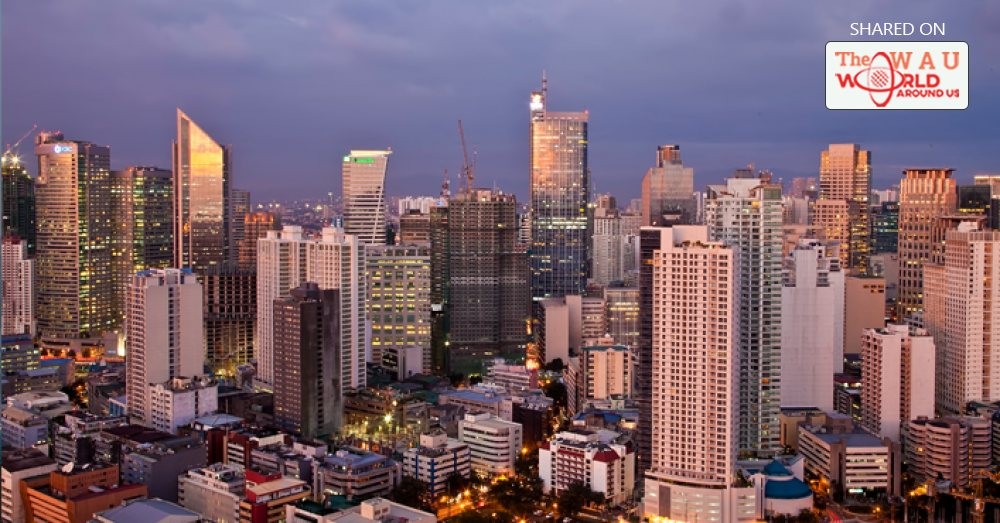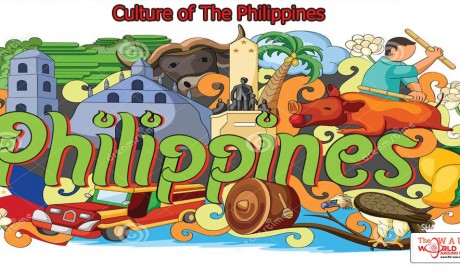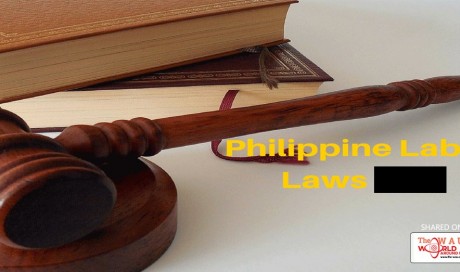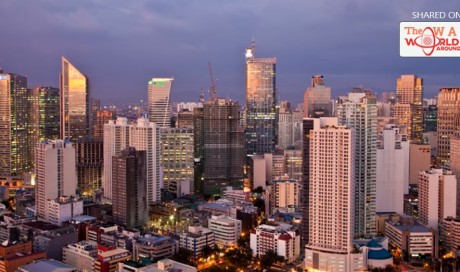State of Philippines:
Philippines is a sovereign island country in Southeast Asia situated in between the South China Sea and the Pacific Ocean. It consists of about 7,641 islands that are from north to south. It has maritime boarders with Taiwan to the north, Malaysia and Indonesia to the south, Vietnam to the west, and China to the northwest.
The state is endowed with abundant natural resources and some of the world's greatest biodiversity. The land area of the state is 298,171 sq km and the total area is 300,000 sq km.
The history of Philippines starts when the Spanish explorer Ferdinand Magellan first landed in the Philippines in 1521. The name Philippines comes from Philip II who was the king of Spain during the 16th century when the country became a Spanish colony.The Philippines was granted to the United States in 1898 following the Spanish-American War. In 1935 the Philippines became self-governing, but their independence was delayed by World War II and the invasion of Japanese troops.
Then the United States of America granted independence to the Philippines on July 4, 1946 through the Treaty of Manila. July 4 was chosen as the date by the United States because it corresponds to the United States' Independence Day, and that day was observed in the Philippines as Independence Day until 1962. The newly elected President of independent Philippines is Manuel Roxas
Then On May 12, 1962, President Diosdado Macapagal issued Presidential Proclamation No. 28, which declared June 12 a special public holiday throughout the Philippines, On August 4, 1964, Republic Act No. 4166 renamed July 4 as "Philippine Republic Day", proclaimed June 12 as "Philippine Independence Day".
Economic and social development:
After independence newly elected President Manuel Roxas reorganized the government, and proposed a wide-sweeping legislative program. Among the undertakings: The establishment of the Rehabilitation Finance Corporation which would be reorganized in 1958 as the Development Bank of the Philippines and the creation of the Department of Foreign Affair and the organization of the foreign service and the revision of taxation laws to increase government revenues
During the Roxas administration, the Philippines established diplomatic ties with foreign countries and gained membership to international entities, such as the United Nations General Assembly, the United Nations Educational, Scientific and Cultural Organization (UNESCO), the World Health Organization (WHO), the International Labor Organization (ILO), etc.
Carlos P. Garcia won the elections, his administration promoted the "Filipino First" policy, whose focal point was to regain economic independence; a national effort by Filipinos to "obtain major and dominant participation in their economy. The Anti Graft and Corrupt Practices Act, aimed to prevent corruption, and promote honesty and public trust. Another achievement of the Garcia administration was the Bohlen–Serrano Agreement of 1959, which shortened the term of lease of the US military bases in the country.
Then Diosdado Macapagal became the president. He aimed at self-sufficiency and the promotion of every citizen's welfare, through the partnership of the government and private sector, and to alleviate poverty by providing solutions for unemployment.
The laws passed during the Macapagal administration were: the Agricultural Land Reform Code, an act that established the Land Bank of the Philippines and established the Emergency Employment Administration and the Philippine Veterans Bank and the National Cottage Industries Development Authority (NACIDA) to organize, revive, and promote the establishment of local cottage industries and the Philippine National Railways (PNR) to operate the national railroad and tramways. The administration lifted foreign exchange controls as part of the decontrol program in an attempt to promote national economic stability and growth.
Location:
The Philippines situated in the western Pacific Ocean on the Pacific Ring of Fire and close to the equator which makes the Philippines prone to earthquakes and typhoons. The major islands are Luzon in the north, the Visayan Islands in the middle, and Mindanao in the south.
Topographic Features:
The topography is extremely varied, with volcanic mountain masses forming the cores of most of the larger islands. The range culminates in Mt. Pulog in northern Luzon and in Mt. Apo, the highest point in the Philippines Mindanao. The shores of many of the islands are embayed Manila Bay is one of the finest harbors in East Asia however, several islands lack adequate harbors and require offshore lightering for sea transport. The only two inland water bodies of significant size are Laguna de Bay in Luzon and Lake Sultan Alonto in Mindanao.
Land Area:
The total land area of Philippines is approximately 300,000 square kilometers.
Population:
According to the 2015 census, the population of the Philippines is 100,981,437.Here 56% of inhabitants reside in Luzon Island and 44% of inhabitants reside in Visayan and Mindanao islands.
Capital City:
Manila
Official Language:
Filipino and English are the official languages.
Major Towns:
Quezon City, Manila, Budta, Davao City, Malingao, Cebu City, General Santos and others.
Climate:
Philippines has tropical rainforest, tropical savanna, tropical monsoon, or humid subtropical (in higher-altitude areas) characterized by relatively high temperature, oppressive humidity and plenty of rainfall. There are two seasons in the country, the wet season and the dry season, based upon the amount of rainfall. This is also dependent on location in the country as some areas experience rain all throughout the year. Here May is the warmest month and January is the coolest month.
Currency:
The Philippine peso (PHP) is the official currency of the Philippines. It is subdivided into 100 centavos. The Exchange parity has been set at the fixed rate of US $=48.29 PHP’S.
National Day:
Independence Day in the Philippines observed on June 12, commemorating the Philippine Declaration of Independence from Spain on June 12, 1898. Republic Day of Philippines is observed on July 4.
Public Holidays:
Independence Day: 12th of July in each year.
Day Of Valor: 9th of April each year.
Bonifacio Day: 30th November each year.
National flag:
The National Flag of the Philippines also called the Three Stars and a Sun is a horizontal flag bicolor with equal bands of royal blue and scarlet, and with a white, equilateral triangle at the hoist. In the center of the triangle is a golden-yellow Sun with eight primary rays. At each vertex of the triangle is a five-pointed, golden-yellow star.
Meaning of the flag:
A. The center golden-yellow sun with eight primary rays, each representing eight provinces that led the Philippine uprising against Spanish rule.
B. The three golden-yellow star, each of which representing one of the country's three main island groups—Luzon, Visayas, and Mindanao.
C. The blue stripe symbolizes patriotism and justice. The red represents valor and the blood spilt for freedom and independence and the white stands for peace and purity. The white triangle represents equality.
Local Time:
8 hours + Greenwich Mean Time.
Electrical Current:
220 Volts at 60 Hertz
Public Transport System:
Transportation in the Philippines is relatively underdeveloped, partly due to the country's mountainous areas and scattered islands, and partly as a result of the government's persistent underinvestment in the nation's infrastructure. In recent years, however, the Philippine government has been pushing to improve the transportation system in the country through various infrastructure projects. Jeepneys are the most popular mode of public transportation in the Philippines. Another popular mode of public transportation in the country is the motorized tricycle; they are especially common in rural areas.
The Philippines has three main railway networks: the Manila Light Rail Transit System composed of the LRT-1 and LRT-2and Manila Metro Rail Transit System composed of the MRT-3 which only serves Metro Manila and the Philippine National Railways which also serves the metropolis and some parts of Luzon. Taxis and buses are also important modes of public transport in urban areas. Because it is an island nation, ferry services are an important means of transportation. A range of ships are used, from large cargo ships to small pump boats
The Philippines has 12 international airports, and has more than 20 major and minor domestic airports serving the country. The Ninoy Aquino International Airport is the main international gateway to the Philippines.
Philippine airways: https://www.philippineairlines.com/en
Philippine metro: https://dotcmrt3.gov.ph/
Sports:
There are six major sports in the Philippines. These are badminton, boxing, football, billiards, tennis and volleyball. Despite being a tropical nation, ice skating is a popular sport in the Philippines. Sports such as athletics, weightlifting, aerobics, and martial arts are also popular recreations.
Philippine sports commission: http://www.web.psc.gov.ph/
Telephone Code:
International code: +63, area codes: http://www.philippinecountry.com/areacodes.html
State of Philippines:
Philippines is a sovereign island country in Southeast Asia situated in between the South China Sea and the Pacific Ocean. It consists of about 7,641 islands that are from north to south. It has maritime boarders with Taiwan to the north, Malaysia and Indonesia to the south, Vietnam to the west, and China to the northwest.
The state is endowed with abundant natural resources and some of the world's greatest biodiversity. The land area of the state is 298,171 sq km and the total area is 300,000 sq km.
The history of Philippines starts when the Spanish explorer Ferdinand Magellan first landed in the Philippines in 1521. The name Philippines comes from Philip II who was the king of Spain during the 16th century when the country became a Spanish colony.The Philippines was granted to the United States in 1898 following the Spanish-American War. In 1935 the Philippines became self-governing, but their independence was delayed by World War II and the invasion of Japanese troops.
Then the United States of America granted independence to the Philippines on July 4, 1946 through the Treaty of Manila. July 4 was chosen as the date by the United States because it corresponds to the United States' Independence Day, and that day was observed in the Philippines as Independence Day until 1962. The newly elected President of independent Philippines is Manuel Roxas
Then On May 12, 1962, President Diosdado Macapagal issued Presidential Proclamation No. 28, which declared June 12 a special public holiday throughout the Philippines, On August 4, 1964, Republic Act No. 4166 renamed July 4 as "Philippine Republic Day", proclaimed June 12 as "Philippine Independence Day".
Economic and social development:
After independence newly elected President Manuel Roxas reorganized the government, and proposed a wide-sweeping legislative program. Among the undertakings: The establishment of the Rehabilitation Finance Corporation which would be reorganized in 1958 as the Development Bank of the Philippines and the creation of the Department of Foreign Affair and the organization of the foreign service and the revision of taxation laws to increase government revenues
During the Roxas administration, the Philippines established diplomatic ties with foreign countries and gained membership to international entities, such as the United Nations General Assembly, the United Nations Educational, Scientific and Cultural Organization (UNESCO), the World Health Organization (WHO), the International Labor Organization (ILO), etc.
Carlos P. Garcia won the elections, his administration promoted the "Filipino First" policy, whose focal point was to regain economic independence; a national effort by Filipinos to "obtain major and dominant participation in their economy. The Anti Graft and Corrupt Practices Act, aimed to prevent corruption, and promote honesty and public trust. Another achievement of the Garcia administration was the Bohlen–Serrano Agreement of 1959, which shortened the term of lease of the US military bases in the country.
Then Diosdado Macapagal became the president. He aimed at self-sufficiency and the promotion of every citizen's welfare, through the partnership of the government and private sector, and to alleviate poverty by providing solutions for unemployment.
The laws passed during the Macapagal administration were: the Agricultural Land Reform Code, an act that established the Land Bank of the Philippines and established the Emergency Employment Administration and the Philippine Veterans Bank and the National Cottage Industries Development Authority (NACIDA) to organize, revive, and promote the establishment of local cottage industries and the Philippine National Railways (PNR) to operate the national railroad and tramways. The administration lifted foreign exchange controls as part of the decontrol program in an attempt to promote national economic stability and growth.
Location:
The Philippines situated in the western Pacific Ocean on the Pacific Ring of Fire and close to the equator which makes the Philippines prone to earthquakes and typhoons. The major islands are Luzon in the north, the Visayan Islands in the middle, and Mindanao in the south.
Topographic Features:
The topography is extremely varied, with volcanic mountain masses forming the cores of most of the larger islands. The range culminates in Mt. Pulog in northern Luzon and in Mt. Apo, the highest point in the Philippines Mindanao. The shores of many of the islands are embayed Manila Bay is one of the finest harbors in East Asia however, several islands lack adequate harbors and require offshore lightering for sea transport. The only two inland water bodies of significant size are Laguna de Bay in Luzon and Lake Sultan Alonto in Mindanao.
Land Area:
The total land area of Philippines is approximately 300,000 square kilometers.
Population:
According to the 2015 census, the population of the Philippines is 100,981,437.Here 56% of inhabitants reside in Luzon Island and 44% of inhabitants reside in Visayan and Mindanao islands.
Capital City:
Manila
Official Language:
Filipino and English are the official languages.
Major Towns:
Quezon City, Manila, Budta, Davao City, Malingao, Cebu City, General Santos and others.
Climate:
Philippines has tropical rainforest, tropical savanna, tropical monsoon, or humid subtropical (in higher-altitude areas) characterized by relatively high temperature, oppressive humidity and plenty of rainfall. There are two seasons in the country, the wet season and the dry season, based upon the amount of rainfall. This is also dependent on location in the country as some areas experience rain all throughout the year. Here May is the warmest month and January is the coolest month.
Currency:
The Philippine peso (PHP) is the official currency of the Philippines. It is subdivided into 100 centavos. The Exchange parity has been set at the fixed rate of US $=48.29 PHP’S.
National Day:
Independence Day in the Philippines observed on June 12, commemorating the Philippine Declaration of Independence from Spain on June 12, 1898. Republic Day of Philippines is observed on July 4.
Public Holidays:
Independence Day: 12th of July in each year.
Day Of Valor: 9th of April each year.
Bonifacio Day: 30th November each year.
National flag:
The National Flag of the Philippines also called the Three Stars and a Sun is a horizontal flag bicolor with equal bands of royal blue and scarlet, and with a white, equilateral triangle at the hoist. In the center of the triangle is a golden-yellow Sun with eight primary rays. At each vertex of the triangle is a five-pointed, golden-yellow star.
Meaning of the flag:
A. The center golden-yellow sun with eight primary rays, each representing eight provinces that led the Philippine uprising against Spanish rule.
B. The three golden-yellow star, each of which representing one of the country's three main island groups—Luzon, Visayas, and Mindanao.
C. The blue stripe symbolizes patriotism and justice. The red represents valor and the blood spilt for freedom and independence and the white stands for peace and purity. The white triangle represents equality.
Local Time:
8 hours + Greenwich Mean Time.
Electrical Current:
220 Volts at 60 Hertz
Public Transport System:
Transportation in the Philippines is relatively underdeveloped, partly due to the country's mountainous areas and scattered islands, and partly as a result of the government's persistent underinvestment in the nation's infrastructure. In recent years, however, the Philippine government has been pushing to improve the transportation system in the country through various infrastructure projects. Jeepneys are the most popular mode of public transportation in the Philippines. Another popular mode of public transportation in the country is the motorized tricycle; they are especially common in rural areas.
The Philippines has three main railway networks: the Manila Light Rail Transit System composed of the LRT-1 and LRT-2and Manila Metro Rail Transit System composed of the MRT-3 which only serves Metro Manila and the Philippine National Railways which also serves the metropolis and some parts of Luzon. Taxis and buses are also important modes of public transport in urban areas. Because it is an island nation, ferry services are an important means of transportation. A range of ships are used, from large cargo ships to small pump boats
The Philippines has 12 international airports, and has more than 20 major and minor domestic airports serving the country. The Ninoy Aquino International Airport is the main international gateway to the Philippines.
Philippine airways: https://www.philippineairlines.com/en
Philippine metro: https://dotcmrt3.gov.ph/
Sports:
There are six major sports in the Philippines. These are badminton, boxing, football, billiards, tennis and volleyball. Despite being a tropical nation, ice skating is a popular sport in the Philippines. Sports such as athletics, weightlifting, aerobics, and martial arts are also popular recreations.
Philippine sports commission: http://www.web.psc.gov.ph/
Telephone Code:
International code: +63, area codes: http://www.philippinecountry.com/areacodes.html
Share This Post










